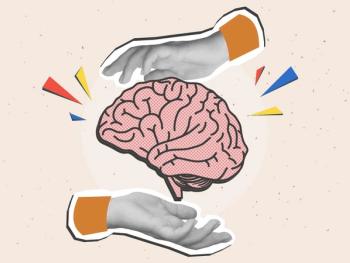
- Vol 34 No 2
- Volume 34
- Issue 2
Top Papers That Can Change Your Practice
The psychiatric literature is overwhelming. So these authors have culled 25 "top" articles based on their relevance to clinical practice. Here's a quick synopsis of 8 top articles.
Here we present brief descriptions of 8 of the top 25 articles we have chosen for their relevance to clinical psychiatric practice, and their clinical applicability. The order in which the articles appear is arbitrary.
ⶠThis study supports the indication that fluoxetine is more likely to be effective than other antidepressants in treating MDD in children younger than 18 years.
The study used network meta-analysis of 34 randomized controlled trials, which included 5260 participants, to compare the efficacy of 14 different antidepressants for acute MDD in children younger than 18 years. SSRIs, SNRIs, TCAs, and other medications were compared. A network meta-analysis allows for comparisons between different medications: although many have not been compared directly with each other, all have been compared with placebo.
Only fluoxetine was statistically superior to placebo in producing improvement. Fluoxetine was associated with fewer dropouts because of adverse effects than several SSRIs, TCAs, and SNRIs. Venlafaxine was statistically most likely to produce suicidal thoughts or behaviors. More patients were exposed to fluoxetine than to any of the other medications; thus, power may be a potential bias in that disparate numbers of patients have been exposed to the different medications.
Cipriani A, Zhou X, Del Giovane C, et al. Comparative efficacy and tolerability of antidepressants for major depressive disorder in children and adolescents: a network meta-analysis. Lancet. 2016;388:881-890.
ⶠThis article adds to the positive support for omega-3 fatty acid preparations, especially those that are primarily eicosapentaenoic acid (EPA) or ethyl-EPA formulations. In this case, adding omega-3 fatty acids to antidepressant therapies for MDD enhanced the therapeutic effects.
This review of nutraceuticals as adjunctive therapy for depression finds several with repeated positive effects on depression. The nutraceuticals with enough trials to enable meta-analyses were examined. Findings for S-adenosylmethionine (SAMe), methylfolate, omega-3, and vitamin D as adjuncts to SSRI therapy for MDD were more positive than negative.
Creatine and an amino acid combination were studied less often but still showed occasional efficacy. Those that did not show much promise were zinc, vitamin C, tryptophan, and inositol.
Meta-analyses supported omega-3 fatty acids from fish oil as very likely to be effective as adjuncts to antidepressant medications. There was mixed support for folic acid and folate-related compounds, but their effects were not comparable to those of omega-3.
It is not yet clear what the optimal dose is, whether it is the same for all antidepressants, and what the optimal duration of adjunctive treatment would be. While safety remains to be determined, omega-3 fatty acid adjunctive treatment does not appear to increase the adverse effects of antidepressants and offers a relatively safe option compared with supplementation with antipsychotic medications or other nutraceuticals.
Sarris J, Murphy J, Mischoulon D, et al. Adjunctive nutraceuticals for depression: a systematic review and meta-analysis. Am J Psychiatry. 2016;173:575-587.
ⶠBased on a review of the literature by a consensus panel, this guideline strongly recommends cognitive-behavioral therapy for chronic insomnia (CBT-I) in adults as the first-line treatment.
The quality of evidence supporting this recommendation was judged to be moderate for a wide variety of outcomes from remission to improved sleep quality. In addition, CBT-I was effective with delivery methods ranging from in-person delivery to telephone or Internet delivery.
If CBT-I does not prove successful, the guidelines weakly recommend sleep medications for a suggested maximum duration of 4 or 5 weeks. The evidence of medication efficacy was weak, with a narrower range of positive effects and with considerably greater adverse-effect burdens. There was insufficient evidence of efficacy for complementary and alternative approaches.
Qaseem A, Kansagara D, Forciea MA, et al, for the Clinical Guidelines Committee of the American College of Physicians. Management of chronic insomnia disorder in adults: a clinical practice guideline from the American College of Physicians. Ann Intern Med. 2016;165:125-133.
ⶠThis article supports the greater use of clozapine in general practice when managing treatment-compliant patients who continue to require hospitalizations and medication changes.
Because of the risk of agranulocytosis, clozapine has come to be viewed in general practice as a last resort for treatment-resistant schizophrenia. This, in turn, has led to possible underutilization.
This article reports on the effects in general practice of switching to clozapine after an inadequate response to standard antipsychotics, such as olanzapine or risperidone. A retrospective cohort design employing Medicaid data was used to compare 2 groups of 3123 patients with treatment-resistant schizophrenia. One group had been switched to clozapine after showing signs of treatment resistance. The other group had been switched to a different non-clozapine antipsychotic after showing comparable signs of treatment resistance, such as hospitalization and at least 2 antipsychotic medications prescribed while maintaining medication compliance.
The 2 groups were selected to enable tight matching on gender, race, and age. Medical and psychiatric symptoms were also matched using a scoring system to reduce the likelihood that the clozapine group had more severe symptoms.
Intent-to-treat analysis demonstrated that the group switched to clozapine had significantly fewer hospitalizations, medication discontinuations, or new antipsychotics initiated, while showing no differences from the non-clozapine group in mortality. The clozapine group had higher rates of diabetes, bowel obstruction, and hyperlipidemia. However, the rates of these adverse effects were relatively low. Other medical adverse effects were not different between groups.
Stroup TS, Gerhard T, Crystal S, et al. Comparative effectiveness of clozapine and standard antipsychotic treatment in adults with schizophrenia. Am J Psychiatry. 2016;173:166-173.
ⶠThe study shows that it is likely that tDCS is superior to placebo and that the higher the tDCS dose, the better the response.
The data that support the efficacy of transcranial direct current stimulation (tDCS) for MDD have been mixed Most studies show positive trends toward better responsiveness and remission rates with tDCS than with sham controls. However, meta-analytic attempts to combine trials have led to mixed results because of the low numbers of randomized trials and participants.
This article presents a different meta-analytic approach that emphasizes individual patient data over group comparisons. One issue with this approach, however, is that not all randomized clinical trials (RCTs) allow for the inclusion of individual patient data, so some caution is appropriate.
Six RCTs were included in the meta-analysis. The results indicated that the response to tDCS was more positive than to sham procedures. The overall efficacy of tDCS was comparable to that seen in response to repetitive transcranial stimulation, and perhaps even to SSRI antidepressants.
This study was not a comparison between tDCS and a validated antidepressant treatment, so comparability has to be assumed. In those circumstances in which access to tDCS is available and patients have a poor response to antidepressant medications or prefer nonmedication treatment, tDCS could reasonably be considered.
Brunoni AR, Moffa AH, Fregni F, et al. Transcranial direct current stimulation for acute major depressive episodes: meta-analysis of individual patient data. Br J Psychiatry. 2016;208:522-531.
ⶠClinicians who are considering omega-3 fatty acids for their patients with MDD should ensure that EPA-predominant PUFAs are used. Similarly, when PUFAs are being considered as adjunctive treatment to antidepressants, EPA-predominant preparations should be recommended.
Meta-analyses in multiple steps were used to assess several hypotheses regarding the potential antidepressant effects of omega-3 polyunsaturated fatty acids (PUFAs), either alone or as an adjunct to antidepressant medications. Previous meta-analyses had yielded mixed results with no clear positive effects of omega-3 PUFAs on depression symptoms.
In this article, results of separate meta-analyses on EPA-predominant
PUFAs versus docosahexaenoic acid (DHA)-predominant PUFAs were reported. In addition, results of separate meta-analyses for the effects of omega-3 on patients with clinically diagnosed MDD versus depressed persons who did not meet clinical diagnostic criteria were reported. As hypothesized, omega-3 PUFAs that were predominantly EPA significantly reduced depressive symptoms in patients who had received a clinical diagnosis. Neither EPA- nor DHA-predominant omega-3s produced significant improvement in depressed patients who did not have clinically diagnosed MDD.
Hallahan B, Ryan T, Hibbeln JR, et al. Efficacy of omega-3 highly unsaturated fatty acids in the treatment of depression. Br J Psychiatry. 2016;209:192-201.
ⶠThe efficacy of interpersonal psychotherapy (IPT) increases the range of evidence-based psychotherapies that can reasonably be recommended for depression, anxiety disorders, and eating disorders, perhaps making referral for psychotherapy easier.
This study compared IPT with other forms of therapy or with some form of placebo for a range of clinical disorders ranging from MDD to eating disorders. The efficacy of IPT in combination with antidepressant medications, IPT for prevention of depression in patients at risk, and IPT for prevention of relapse were also examined. The efficacy of IPT for the treatment of depression has been long recognized, although its relative efficacy compared with CBT or antidepressant medications was less certain.
Meta-analysis of 90 studies including over 11,000 patients again showed that IPT was more effective than placebo or waiting list controls for the treatment of MDD. The results also showed that IPT was comparable in efficacy to CBT and to pharmacotherapies. The combination of IPT with antidepressant medications produced greater improvement in depression than IPT alone. Moreover, IPT was efficacious for anxiety disorders and for eating disorders.
There were no important differences in the efficacy of IPT and CBT or pharmacotherapies for depression, anxiety, or eating disorders. The lack of availability of therapists and evidence-based psychotherapies can be a significant problem, however.
Cuijpers P, Donker T, Weissman MM, et al. Interpersonal psychotherapy for mental health problems: a comprehensive meta-analysis. Am J Psychiatry. 2016;173:680-687.
ⶠThis study strongly suggests that less caution is needed in first-term use of sertraline, but increased caution is needed for fluoxetine in pregnant women. Continued caution should be used when considering paroxetine.
This case-control study is based on a very large multistate US dataset. It allowed individual birth defect risk to be associated with 5 SSRI exposures. The odds found in the dataset were used to modify the odds that already existed in other studies. The authors conducted a meta-analysis to determine the a priori odds and then in conjunction with the dataset determined the posterior odds.
A group of almost 18,000 women who gave birth to infants with birth defects were compared with almost 10,000 women whose infants had no birth defects. All women were asked about their SSRI use in the month before pregnancy and during the first trimester of their pregnancy.
Because of the study design, the odds of each SSRI exposure were associated with specific defect identification, rather than the other way around. In addition, no causal conclusions could be made. Despite these limitations, the large number of defects and exposures allowed for more precise estimates of the associations between defects and first-trimester exposure to each SSRI. The large dataset found that most previously reported associations were not supported. Perhaps most importantly, no birth defects were associated with sertraline exposures.
Many of the previously reported associations of defects with paroxetine were replicated. Two defects were associated with fluoxetine exposure.
Defects were not associated with citalopram, escitalopram, or sertraline.
Reefhuis J, Devine O, Friedman JM, et al, on behalf of the National Birth Defects Prevention Study. Specific SSRIs and birth defects: bayesian analysis to interpret new data in the context of previous reports. BMJ. 2015;351:3190.
Disclosures:
Dr. Saeed is Professor and Chairman of the Department of Psychiatry and Behavioral Medicine at the Brody School of Medicine at East Carolina University, Director of the ECU Center for Telepsychiatry and e-Behavioral Health as well as of the North Carolina Statewide Telepsychiatry Program (NC-STeP), and Chief of Psychiatry at Vidant Health in Greenville, NC. Dr. Bloch is Professor and Director of Research in the Department of Psychiatry and Behavioral Medicine at Brody School of Medicine at East Carolina University.
Articles in this issue
over 8 years ago
Introduction: Violence Toward Staff in Health Care Settingsover 8 years ago
Depressive Symptoms Associated With Aggressionover 8 years ago
The Role of Psychiatrists in Countering Violent Extremismover 8 years ago
APA Position on Medical Euthanasiaover 8 years ago
Exercise and Depression in Youthover 8 years ago
A Crisis in the Public Service Psychiatric WorkforceNewsletter
Receive trusted psychiatric news, expert analysis, and clinical insights — subscribe today to support your practice and your patients.















